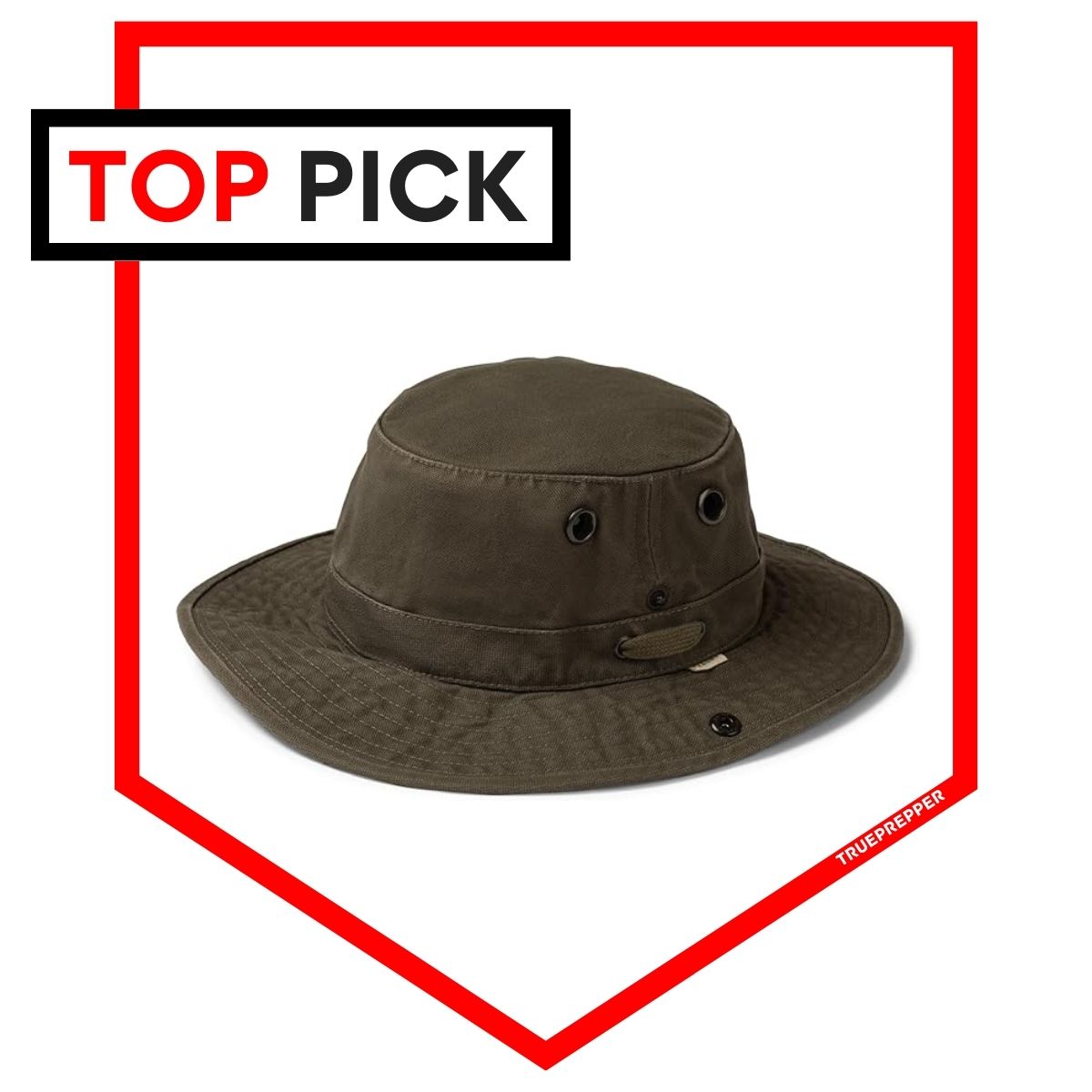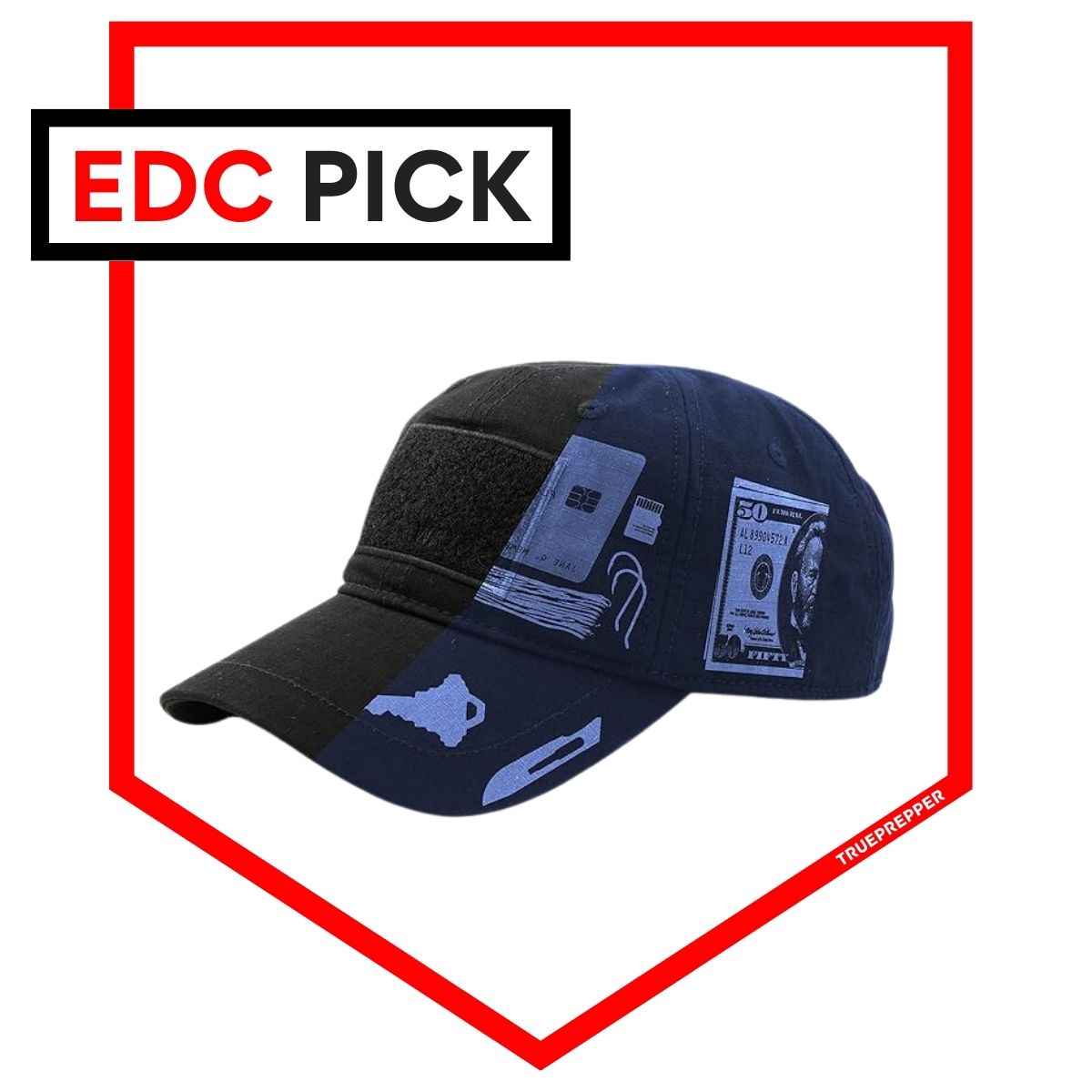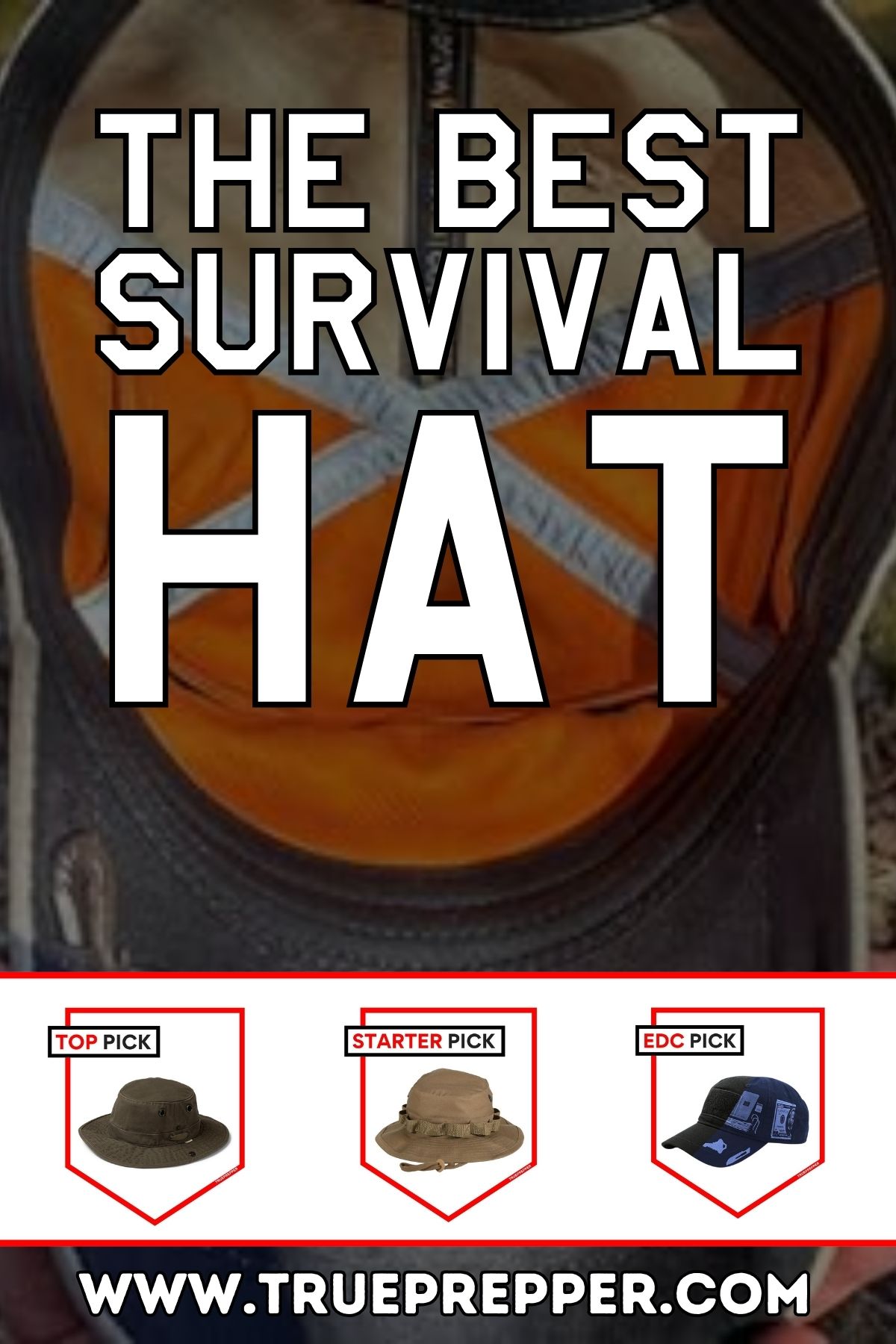Your head happens to be a pretty important part of your body. Somebody in ancient Egypt thought it was a good idea to put a basket on their head one day, and the hat was invented. Now that people’s heads were protected from the elements, they could get a lot more done. Over the years, we’ve come a long way from that straw basket, but the principle is the same: wear a hat to protect your head from the elements and improve what you can do in various conditions. The best survival hat may not be a straw basket, but this utility is the reason hats are important for survival. There are many different types and brands of survival hats to pick from. Plenty of hats can give you shade, keep you dry, or keep you warm- but the key is finding a versatile hat that is both durable and comfortable.
This is where we can help. We have plenty of combined experience with hats, wearing them every day, during military operations, and in survival situations. Plus, we have put in the research and testing just for this roundup. We selected four hats that rise above the rest, with good versatility, great durability, and best of all: they are comfortable to wear.
Contents (Jump to a Section)
The Best Survival Hat
Broad brim, vented, and clearly the best.
This hat is the standout by far, with impeccable quality backed by the best brand in the business.
*Price at time of publishing; check for price changes or sales.
I first became familiar with Tilley many, many years ago when I was giving guided kayak tours as a summer job. While I was navigating a marsh most of the hours of the day I learned how important sun protection can be. The Tilley hats sold out of the shop were much more expensive than the fishing hats I wore, but the kayak shop owners swore by them. After I’d worn out another hot, absorbent fishing hat I tried a Tilley… and never turned back.
This Tilley Wanderer Hat is perfect for any weather and has proven itself to be the best broad-brim hat on the market. It is preferred by outdoor professionals in a wide variety of climates. The hats fit like a glove and exert very little pressure to stay on your head- preventing headaches and marks even after you wear them all day. They dry quickly, are top-vented, water resistant, provide SPF 50+ sun protection, are stowable, and have a secret pocket in the crown.
Tilley also has great customer service and is known for their quality. Born out of Canada with a mission to create the perfect sailing hat, the hats they designed grew to be the best for a wide range of outdoor activities. Everyone who owns one becomes a fan. If you are looking for a survival hat that you will wear every day, this hat will be your first choice.
Starter Survival Hat
Cheap, MILSPEC, and effective.
A solid, military-proven hat that is inexpensive enough for any survival kit.
*Price at time of publishing; check for price changes or sales.
We don’t conduct our reviews based solely on personal experience, but I will admit that I hold a soft spot for the boonie after my time in the service. These hats are awkward, floppy, and plain goofy looking when they are worn out of military context, but they sure do what they are designed for. This floppy hat isn’t as lightweight, comfortable, or ‘pretty’ as our top pick- but it is over 3 times cheaper which can’t be ignored.
Rothco makes a pretty solid boonie, and is, of course, MILSPEC grade. The construction is 55% cotton, 45% polyester and it has the signature attachment loops around the band and an adjustable chin strap. This hat is perfect for stowing away in a kit to have available in emergencies.
EDC Survival Cap
Versatile, comfortable, and discrete.
This stash cap has a whopping total of six hidden pockets, making it an EDC powerhouse.
*Price at time of publishing; check for price changes or sales.
Wazoo is a well-known EDC gear company that specializes in adding capability to ordinary gear. This basic tactical hat they have made happens to be a work of art. It is extremely rugged- you can rub it around in the dirt on a mud run and then throw it in the washing machine afterward without bill damage or deformation.
The Wazoo Cache Cap is lightweight and surprisingly comfortable for a ball cap right off the rack. The patch area on the front with the Wazoo logo is stylish, but discrete enough to pull off with a gray man look. Wear it everywhere, or stash it in your go bag. This hat will keep up.
Everything We Recommend

Tilley Wanderer Hat
This hat is the standout by far, with impeccable quality backed by the best brand in the business.
Where to Buy
$69* at Amazon
*at time of reviewing

Wazoo Cache Cap
This stash cap has a whopping total of six hidden pockets, making it an EDC powerhouse.
Where to Buy
$39* at Amazon
*at time of reviewing
The Hats We Compared
Tilley, Columbia, Patagonia, Rothco, 5.11, Condor, Outdoor Research, Black Diamond, Carhartt, Thinsulate, Icebreaker, Whitepeak, and more were researched, tested, and compared for this survival hat review. People come in a variety of sizes and shapes, but the products we picked have excellent and consistent fit in the sizes we tried, and in reviews of other sizes. Comfort preferences can vary to a degree, but it is still easy to tell when the whole group decides that one hat is more comfortable than another hat. All of this information together helped us inform our recommendations.
Trackers, Carvers, Flap Hats, Balaclavas, Shemaghs, and More
There are many, many different types of hats that work in a survival situation. So why are all of these not in our top picks?
Tracker and Carver hats are some of the top hat types for extreme cold weather. But they are not great for any other situation. Their lack of versatility caused them to not show up as any of our top picks. Flap hats are great for providing sun protection, but they are also too specific of an application to cover a wide range of possible situations. If you are about to go on an Antarctic excursion, pack a professional-grade tracker hat, otherwise- opt for a more versatile pick.
Balaclavas, Shemaghs, Keffiyehs, and Scarves are considered in their own category. Sure, they can cover your head in a survival situation- but their versatility puts them in their own class. Here is our review of shemaghs: The Best Shemagh for Survival.
What to Look For
The best prepping and survival hats have several important considerations to look for:
- Cost
- Quality
- Versatility
- Comfort
Below, we break down what each of these means for a great survival hat. When you get the right blend of these, you get a truly versatile high-performance hat with good value. Each consideration is important, for example: you don’t want to prioritize cost over comfort- a hat that is a pain to wear won’t help you out in a survival situation.
Cost of a Cap
When you are looking for a hat, you will find a slew of options with prices all over the place. First off, you can eliminate any type of ‘trendy’ hat or something to do with fashion. Aside from the grey man concept, looks are not important when it comes to hats. In fact, many of the better-performing hats look pretty ridiculous (ex: flap hats).
You should be left with hats that have prices that scale with quality. Some hats, like our top pick Tilley, cost a lot- but they have world-renowned quality and warranties to back them up. Other hats, like the budget pick Boonie, are cheap (by way of being made in China), but you can still rely on them to get the job done in a pinch.
How much you spend on a hat should depend on how much you plan on using it. If you are going to wear it every day, invest in quality. If not- save your money for more important gear and stow a cheap option in your bug out bag.
Quality and Dependability
With all of the different types of hats, many factors go into a hat’s quality.
One main factor all hats share is the fabric type and weight. Lightweight fabrics will not last as long as heavier fabrics and the composition of the fabric will affect this. Waterproofing, UV resistance, abrasion, and pilling resistance all contribute as well. Brim hats can have metal, composite, or plastic wire to make the brim rigid. The plastic bill in a ball cap needs to be pliable enough to not break, but rigid enough to hold its shape.
With all of these considerations, one of the easiest ways to tell quality is to try the hat in person to feel the quality, see reviews on it, and get recommendations from trusted sources.
Versatility for Any Situation
Choosing the right kind of hat for a likely survival situation is important. If you live in the Arctic Circle, a very warm trapper hat would be perfect. If you’re in the Sahara, it might get just a little hot in a trapper. To deal with a wide variety of weather, hats can be just like clothing: layerable.
It is better to have a hat that performs well in warm, humid weather and adapt it to your conditions with an underlayer beanie, shemagh, bandana, etc. A brim is also useful for a wide range of climates and weather conditions.
Keep it Comfortable
In the military, combat helmets are a good example of why comfort matters. If you have a comfortable helmet, you adjust it less, don’t take it off as often, and are less likely to get a headache. Over the years, from the M1 to the PASGT, and then to the ACH and ECH, each model became more comfortable- and US warfighters less encumbered.
This principle applies to your survival hat too. You might have some sort of amazing ‘survival hat’ with integrated MOLLE pouches, a massive brim, removable insulation, and a face shield- but all of that weight and the distraction of pulling stuff out of the storage pouches is going to cause you to wear the hat less.
And what’s the point of a hat, if you’re not wearing it?
Why Hats are Important for Survival
When you think about it, a hat is sort of a portable shelter. If it’s a good survival hat, it will shelter you from the elements like extreme cold weather or the blazing sun at high noon. Shelter is one of the five pillars of survival, and the survival rule of three says we can’t live long without it. About 1,330 people die of extreme cold exposure in the US each year, and 670 from extreme heat. Nobody wants to become a statistic, and if you’ve been outside in either of those conditions- you already know a hat can help.
Hats have been helping humans survive and thrive for over 5,000 years. Ever since that Egyptian guy slapped that straw basket on his head back in 3200 BC, people have been wearing hats for survival or fashion (or both!).
Even beyond the immediate threat of exposure, brimmed hats can prevent long-term UV damage and associated melanoma. Skin cancer is no joke, and it is best to cover up with a hat and some sunscreen when you are outdoors for a long period.
Who Needs a Survival Hat?
Anyone with a head can benefit from the right hat in a survival situation. Most preppers have a go-to versatile hat as part of their wardrobe. Whether it’s brimmed or a ball cap, a hat is great for working on projects, getting outdoors, or just getting stuff done around the home.
Because of their versatility, survival hats are an essential part of:
Survival hats are a suggested addition to some portable kits:
Whether you keep it in your closet, keep it in arm’s reach, or stow it away in a bag- a hat is a handy piece of clothing for anyone.
How We Review Products: We research thoroughly before selecting the best products to review. We consult experts in the field for a better understanding of what makes the gear great. Hours on end are spent field testing gear in stressful conditions. We assign performance criteria and impartially rate each tested item. After our review process, some of the items reviewed end up in our giveaways.
Sources and References
Our analysis of the best hats for survival and prepping would be useless without crediting our sources and references. We leaned on these resources for the book knowledge that we paired with our practical military and emergency management experience. If you would like to learn even more about hats for survival, dig into our sources:
Amphlett, H. (1974). Hats: A History of Fashion in Headwear. Dover Publications. (Source).
Diffy, B., et al. (1992). Sun Protection with Hats. British Journal of Dermatology. (Source).
Sperber, A., et al. (1997). Mind Over Matter About Keeping Warm. The Lancet. Vol 349, Issue 9062. Pgs 1337-1338. (Source)
The Final Word
Survival hats are an important part of any prepper’s wardrobe.
As always, I suggest that you try your hat- even if you picked the budget boonie to stash in a go bag. Make sure it fits right, is comfortable, and won’t give you a headache. Finding out that your hat is not the best fit for you is something you want to happen now- not in the middle of an emergency. If you are looking to learn more about survival clothes, check out these articles we’ve written up:
We presented quite a lot of information, but as always: if you have any questions let us know and we would be happy to help. Our research and testing settled on the Tilley Wanderer Hat as the best option based on its quality, durability, versatility, and comfort.
Keep exploring, stay prepared, and be safe.
You’ve Been Missing Out
Join the 2+ million preppers that rely on our prepping advice by subscribing to TruePrepper.
- Practical guides and tips
- Useful survival giveaways
- Free, forever
- < 0.4% of people unsubscribe
Thanks for subscribing, reading, and welcome to the club.

The post Best Hats for Prepping and Survival appeared first on TruePrepper.
https://trueprepper.com/best-survival-hats/
 CampingSurvivalistHuntingFishingExploringHikingPrivacy PolicyTerms And Conditions
CampingSurvivalistHuntingFishingExploringHikingPrivacy PolicyTerms And Conditions
